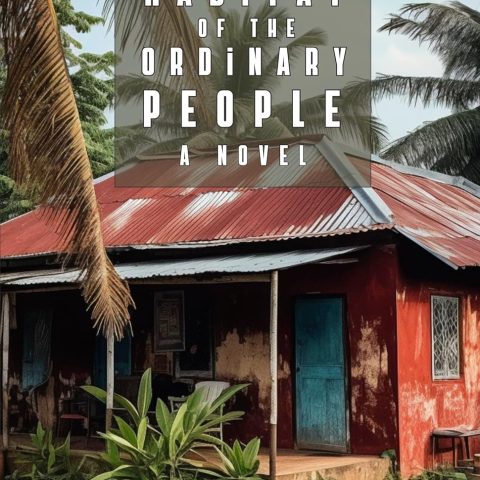By Simone Drake | With thanks to NewBlackMan (in Exile)
Wednesday, December 4, 2013.
After anxiously awaiting the opening, I saw Best Man Holiday the Sunday afternoon opening weekend. Upon walking into the large, stadium-style theater, my husband looked at the mismatched, small audience of viewers and said, “I guess they were expecting a larger crowd.” I glanced at two white women in the row behind us and scoped out an additional cluster a few rows in front of us, replying, “I wonder why white people watch a film like this.” My husband asked why wouldn’t they, and without putting on my intellectual-professorial hat, I quickly proclaimed, “Because this is a black-black film.” My husband’s dubious expression prompted me to break down my essentialist assertion.
�
Best Man Holiday is not a Tyler Perryesque-style film that white people watch to laugh at rather than with black people; it also is not a slave film or some other black oppression film that white liberals flock to in order to feel guilt and receive penance. BMH, like its 1999 precursor, Best Man, is a film about black people for black people. Here’s what I mean by that loaded declaration.
�
Many “black films”—meaning black-casted and typically therefore also black-directed—often are trying to reach a racially and ethnically diverse audience, because that is how money is made. It was director Malcolm D. Lee’s goal when writing the script for BMH. In a Washington Post interview, Lee responds to a USA Today tweet describing his film as “black-themed,” insisting black film is not a genre and his mission has been to make movies starring African American actors and about African American experiences, situating them in the mainstream by telling very “universal” stories. His goal is to humanize African Americans and demonstrate they possess all of the same human qualities as all other human beings—a “shared human experience.”
I am not convinced that a shared human experience allows a film to transcend a particular raced experience. When Lee insists the film is not about race, he misses the point. The film does not have to engage the social construction of race and its lived realities to engage racialization. In fact, when he denounces race, he contradicts himself when explaining what draws the high turnout of black moviegoers who undid the underperformance prediction of critics. Lee suggests familiarity draws his black audience—the ability to see themselves in the characters.
When I told my husband this is a black-black film means it is a film that black people relate to, he asked if that meant I could not relate to white-casted films. I said, of course I can relate, but the relational aspect of BMH is different. This film is nostalgic of some specifically black experiences from high school, college, and graduate school. I’ve never seen a white quartet dance to New Edition, and I don’t remember any white, female classmates swooning over the group; in fact, white people had not discovered black popular culture at New Edition’s prime. �
I have not attended a white-casted film in which the black audience freely and vocally talks back to the film, as they did when I viewed the film (I’m glad someone—turns out it was my cousin, LaQuan, who I didn’t realize was there—shouted for me during the shirtless Morris Chestnut scene). And, as a Black Greek, my experience has been that white people know very little about Black Pan-Hellenic Organizations, and the fact that the film incorporated the values, culture, and even fraternal language of those organizations into the film without footnote suggests Lee is not being completely honest with himself.
If Lee must say he is humanizing African Americans, then this is a film about what it means to be raced, because white film directors do not have to humanize white characters; they do not have to demonstrate how white characters are no different when it comes to human affect and sentimentality than any other humans. This is why black audiences flocked to Best Man in 1999 and returned in 2013. There has not been much on the silver screen between those years to make black people feel human—to make us feel good, deep down on the inside. Sure, black people enjoyed Steve Harvey’s Think Like a Man (2012) and continue to support the Tyler Perry enterprise in spite of its less than humanizing qualities, but those films do not portray the interior lives of the characters in a manner that complicates the very need to universalize the black experience.
How many “black-themed” films have foregrounded, or even included, children in the storyline? BMH did not foreground them, but they were present and an important element of the storyline. I dare say it might have been as far back as Kasi Lemmons’s masterful depiction of the interior lives of a black, southern family in Eve’s Bayou (1997) since a depiction of the interiority of black children had been represented on screen. �
How often do white filmmakers create a film with a predominantly or exclusively black cast and present them in ways that defy the stereotypes of the limited imagination of a dominant society that benefits from their social and political subordination? Unless I missed something, the answer is, not often. The fact that both Lee and journalists/bloggers insist upon the universality of the film disturbs me. It means that only very particular types of experiences can be claimed by black people as their own, which means I must address a different type of black film: the slave narrative.
Released earlier this autumn, British film director Steve McQueen’s 12 Years a Slave was also an instant hit. In some very clear ways, 12 Years is a black film. Slavery in the United States was not a universal experience—it was a deliberately raced experience. Bloggers and the posts by my FB friends about this film perplex me. The resounding sentiment is that this film finally got slavery right; this is a film that finally fully and accurately depicted the brutality and dehumanization of slavery, and without white saviors being foregrounded. I deliberately have not seen this film. I decided if I am going to spend $10 to see a film, it will be one that makes me feel good—really, really good. I will see 12 Years when it comes to Red Box.
I have not yet seen any commentary suggesting 12 Years has made black people, or anyone else, feel really, really good. Instead, I hear it makes black people feel angry. Angry yet so pleased with the accuracy of the brutality and dehumanization. Why is it that trauma and pain can be claimed as the quintessential black experience, while the experiences of Black Greek life, R&B, and the college experience of “all the black kids sitting together in the cafeteria,” and therefore forming exclusively black social groups and bonds, not be a black experience? �
Does this mean that the deep-rooted shame and pain of a slave past has so warped the black psyche that notions of poet and scholar Elizabeth Alexander’s “black interior” must be rejected in the twenty-first century and replaced by insistence upon a generic, universality that strips African Americans of the really, really real aspects of being “black” in a nation that has never recognized their interior lives in the first place? Wow.
***
Simone Drake is an assistant professor of African American and African Studies at The Ohio State University. She is the author of Critical Appropriations: African American Women and the Construction of Transnational Identity (forthcoming, LSU Press) and her second book, When We Imagine Grace: Black Men and Subject Making is under contract with University of Chicago Press.





